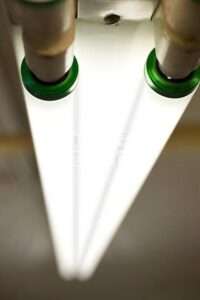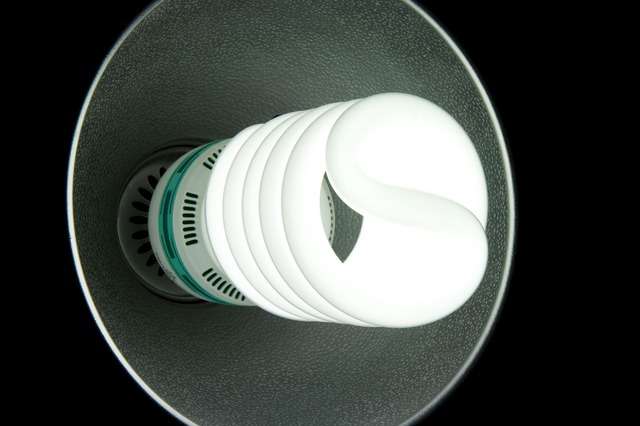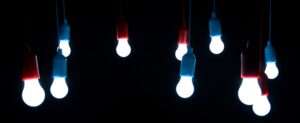After installing LED lights throughout a facility, it is important to properly dispose of fluorescent bulbs that have been replaced.

Fluorescent tubes are common in office buildings and other commercial or public spaces. While no comparison for LEDs’ energy saving abilities, Fluorescent bulbs are more efficient than incandescent lights. For years they were the natural choice for large spaces that need consistent, even lighting.
Because of their shape, fluorescent bulbs can be cumbersome to transport. It is important to handle them carefully when replacing and disposing of them.
Common questions to properly dispose of fluorescent bulbs
After replacing fluorescent bulbs, it is important that they are properly disposed of. Fluorescent bulbs cannot be disposed of through most regular recycling services and need special consideration.
Do fluorescent bulbs contain mercury?
Yes, all fluorescent lights contain a small amount of mercury. Mercury is essential to the function of a fluorescent light. It is a hazardous material and must be handled properly.
Can I recycle my fluorescent tubes in my curbside bin?
No. Fluorescent tubes are considered waste material in the United States that contain hazardous components and are not accepted as part of most curbside programs. Many areas offer take-back programs or have drop-off locations to allow residents to properly disposing of fluorescent lights. Some hardware stores also will take unbroke fluorescent tubes or other lights containing mercury. To find local recycling options, click here.
What should I do if I break a fluorescent tube?
Fluorescent lights contain less mercury than CFL’s but should be treated with care. If you break a fluorescent light while handling or replacing it, have all people and pets leave the room. Turn off the central air or heating system and open the door and windows of the room. Air out the room for a couple of hours to be safe. Appropriate cleaning supplies include sticky tape, stiff paper, damp paper towels, and an airtight container for broken glass pieces. Do not use a vacuum as vacuuming may spread mercury-containing powder or mercury vapor. Detailed instructions for cleaning up after breaking a fluorescent tube or CFL bulb can be found here.
Are there alternatives to fluorescent lights?
The best alternative to fluorescent tubes is LED tube lighting. LED lights do not contain mercury and have been designed to fit existing fluorescent tube fixtures. Plus, they are significantly more energy efficient with a longer lifespan and will save businesses thousands of dollars in energy costs.




